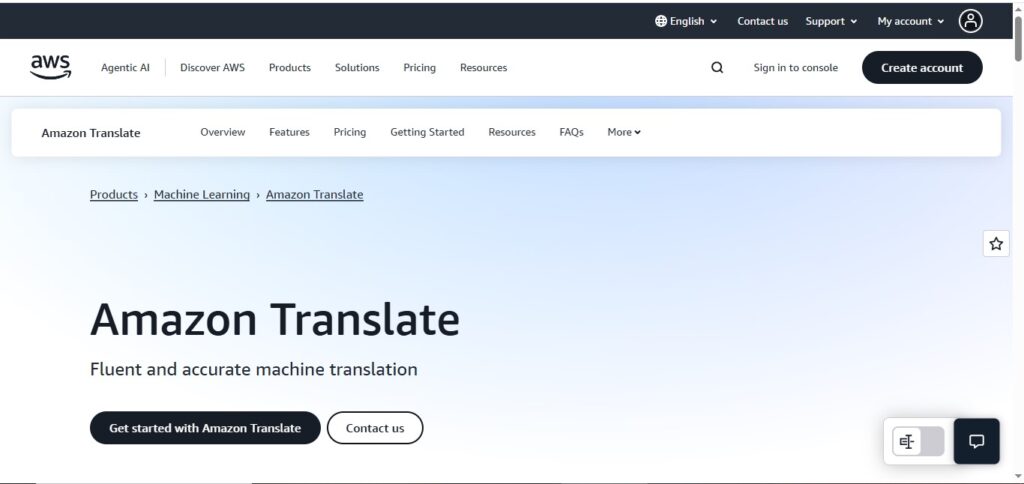
In this blog I’m going to guide you about Amazon Translate Tutorial which has quickly become one of the most reliable cloud-based translation services available today. Built by AWS, it uses advanced neural machine translation (NMT) to provide accurate, context-aware translations at scale. however If you’re looking to understand how to use Amazon Translate for your business, project, or app, this tutorial will guide you step by step in a simple, human-friendly way.
What is AWS Translate?
AWS Translate (commonly referred to as Amazon Translate) is a neural machine translation service offered by Amazon Web Services. Instead of relying on traditional translation models, it uses deep learning algorithms to provide natural, context-aware translations across 75+ languages.
Why Use Amazon Translate in 2025?
Because global businesses are rapidly expanding into new regions, accurate communication has never been more important. In this context, Amazon Translate not only ensures consistency across languages but also integrates smoothly with other AWS services, making it ideal for organizations that already rely on AWS infrastructure. To help you get started, here is the step-by-step tutorial to use it properly.
Amazon Translate Tutorial: Step-by-Step Guide
Step 1: Create an AWS Account
- If you don’t already have one, sign up at aws.amazon.com.
- New users get free-tier benefits.
Step 2: Open Amazon Translate Console
- Go to the AWS Management Console.
- Search for Amazon Translate in the search bar.
Step 3: Start a Translation Task
- Enter the text you want to translate.
- Choose the source language (or set to “Auto Detect”).
- Select the target language.
- Click Translate.
Step 4: Batch Translation (Optional)
For large documents, upload files via Amazon S3 and trigger batch translation jobs.
Key Features of Amazon Translate
- Neural Machine Translation for better accuracy
- Real-time and batch translation options
- Scalable for millions of characters per request
- Integration with other AWS services like S3, Comprehend, and Polly
Benefits for Developers and Businesses: Amazon Translate is especially useful for developers who need API-based integration. At the same time, businesses benefit from its scalability, cost-effectiveness, and ability to handle high volumes of content while maintaining accuracy.
Accuracy and Context: Unlike traditional systems, Amazon Translate uses neural networks to understand context, which means translations feel more natural and closer to human quality.
Know About Amazon Translate Pricing:
Amazon Translate charges based on the number of characters translated. The first 2 million characters per month are free for the first year, and after that, you pay a small fee per million characters. To know more 👉 click here
Where we should use Amazon translate:
- E-commerce: Translating product descriptions for global customers.
- Healthcare: Converting medical documents into multiple languages.
- Education: Making study materials accessible worldwide.
- Travel: Helping platforms serve global travelers.
Pros:
- Scalable and reliable
- Accurate neural translations
- Easy AWS integration
Cons:
- Requires AWS setup knowledge
- Less user-friendly for beginners compared to Google Translate
FAQs about Amazon Translate:
No, it is a cloud-based service and requires internet access.
Amazon Translate is very accurate for business and technical use, while Google Translate is more casual and user-friendly.
You get 2 million characters free each month for the first year. After that, pricing is based on usage.
Yes, using the AWS SDK and API, you can embed it into applications.
Final Summary:
Amazon Translate is a powerful tool for anyone looking to break language barriers at scale. Although it may take a little setup effort, once configured, it not only delivers fast, reliable, and accurate translations but also ensures consistency across projects. Moreover, for businesses already on AWS, it stands out as one of the best translation solutions available in 2025.




Pingback: Amazon Translate: The Complete Guide to Amazon Translate